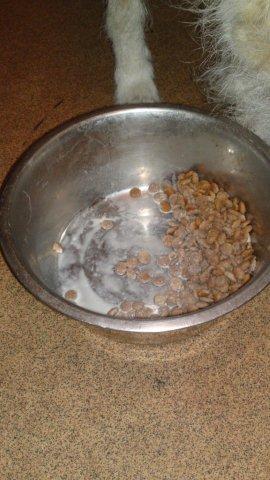
The throat cancer symptoms are important to spot from the early stages of the disease, so that there are several treatment options and the dog can have an encouraging prognosis. The throat cancer can originate in the esophagus, the tracheaor the larynx and will evolve, involving other organs as well. The symptoms may vary according to the areas where the cancer starts, but there are other signs common to all types of throat cancer.
Tumors that are malignant and originate in the dog’s esophagus are very rare. However, when this is present, the symptoms will include:
- Vomiting immediately after meals
- Pain when swallowing
- Lethargy
- Weight loss
- Drooling
- Depression due to pain
- Exercise intolerance, the dog will refuse to run as much as he used to and will not engage in games he usually likes
Tracheal cancer originates in the trachea and will affect the dog’s breathing. The most common signs of tracheal cancer will include:
- Panting and difficulty breathing, as the passage of the air can be limited
- Dry, persistent cough
- Behavioral changes
- Aggression, due to pain
- Exercise intolerance
However, the dog may also vomit, have insomnia and refuse to eat. Thecondition can cause a lot of pain, so the dog can experience depression.
Most tumors that affect the larynx are benign, but there may also be cancerous tumors. The dog will have symptoms such as:
- Changes in the dog’s barking tone, the dog may be hoarse, but this will be chronic
- Lack of appetite, which is partly due to the fact that the dog will experience pain when he swallows the food, so he will avoid eating
- Lethargy
- Exercise intolerance
- Irritation, especially when you touch his throat
The throat cancer can be diagnosed through a biopsy, as the symptoms of the dog may also appear even if the dog has a benign growth in his throat. The biopsy will have to be performed under anesthesia.
X-rays and an esophagram as well as an esophagoscopy may also be performed to determine the stage of the cancer. The stage of the cancer will determine the best course of treatment and the prognosis of the dog.
If surgical removal is possible, this is the best treatment option, as it may eliminate all cancerous cells and these may never return. Chemotherapy is still recommended, as the dog’s body may easily produce new cancerous cells, and the drugs will stop the development of these cells.
Due to the fact that the dog cannot swallow properly, he will need a change in diet. A liquid diet is easier to swallow. in some cases, feeding tubes will be necessary, as the dog may refuse to eat.
If the dog is in the 4th stage of throat cancer and the lungs are also affected, many vets will recommend euthanasia.